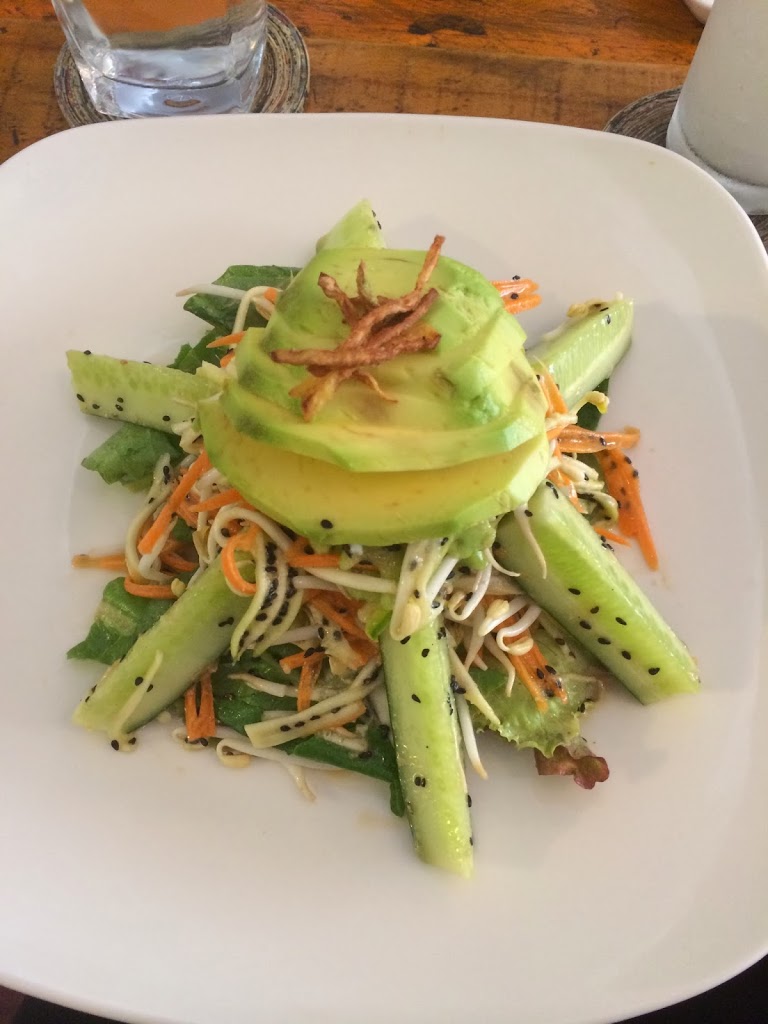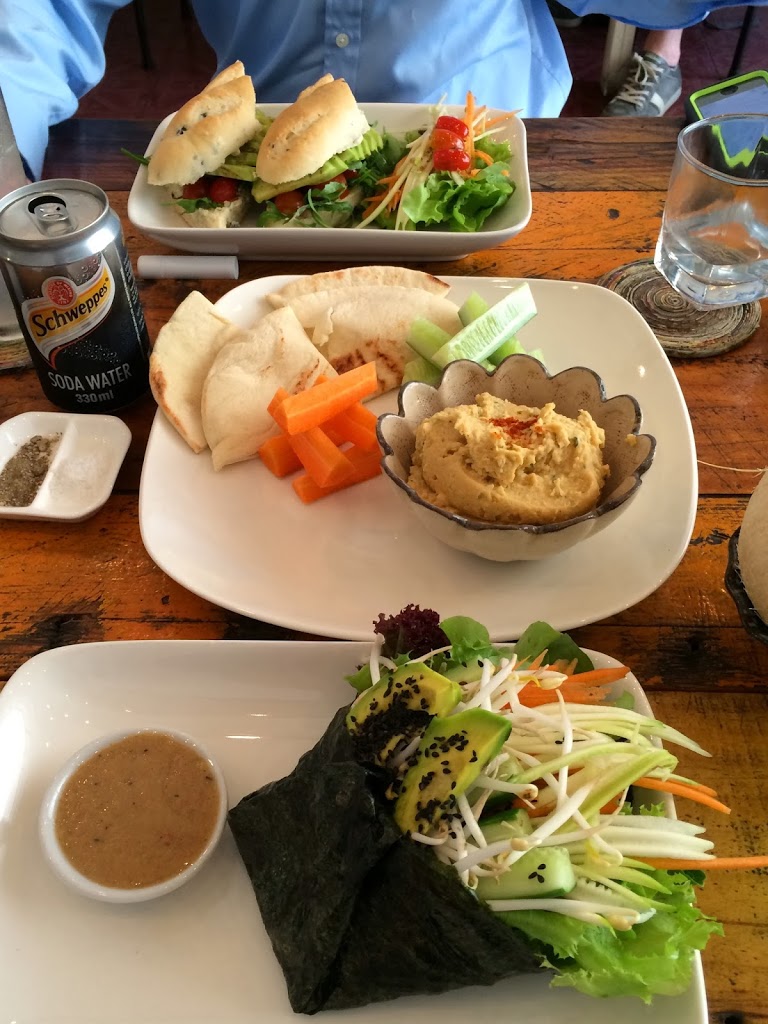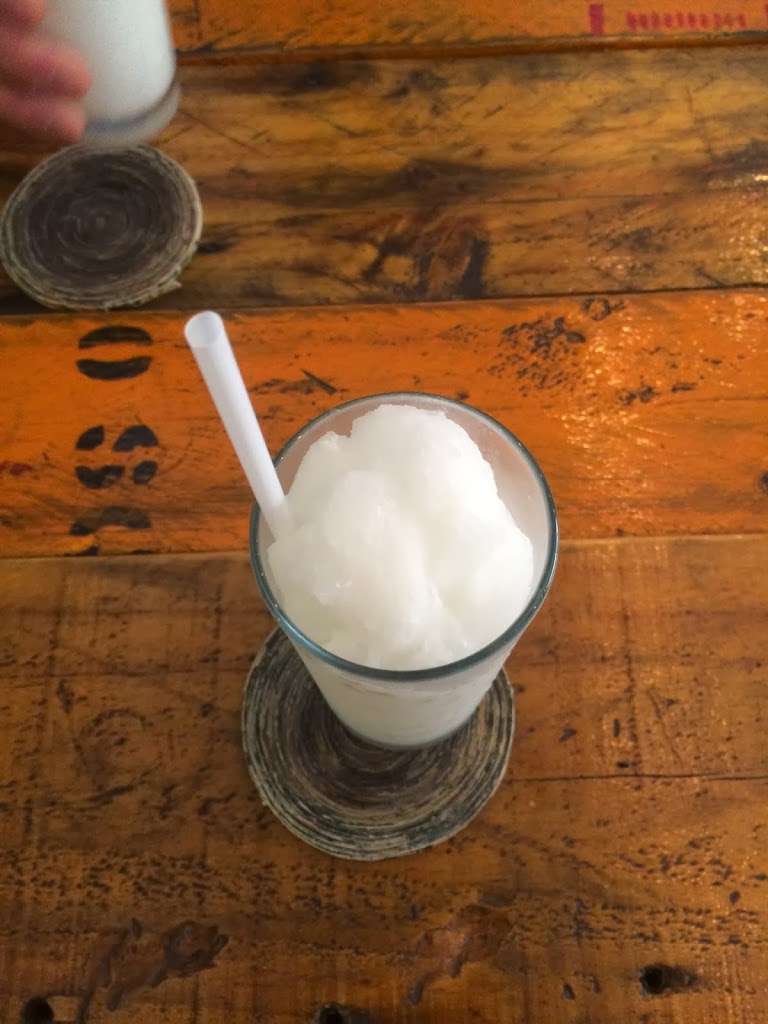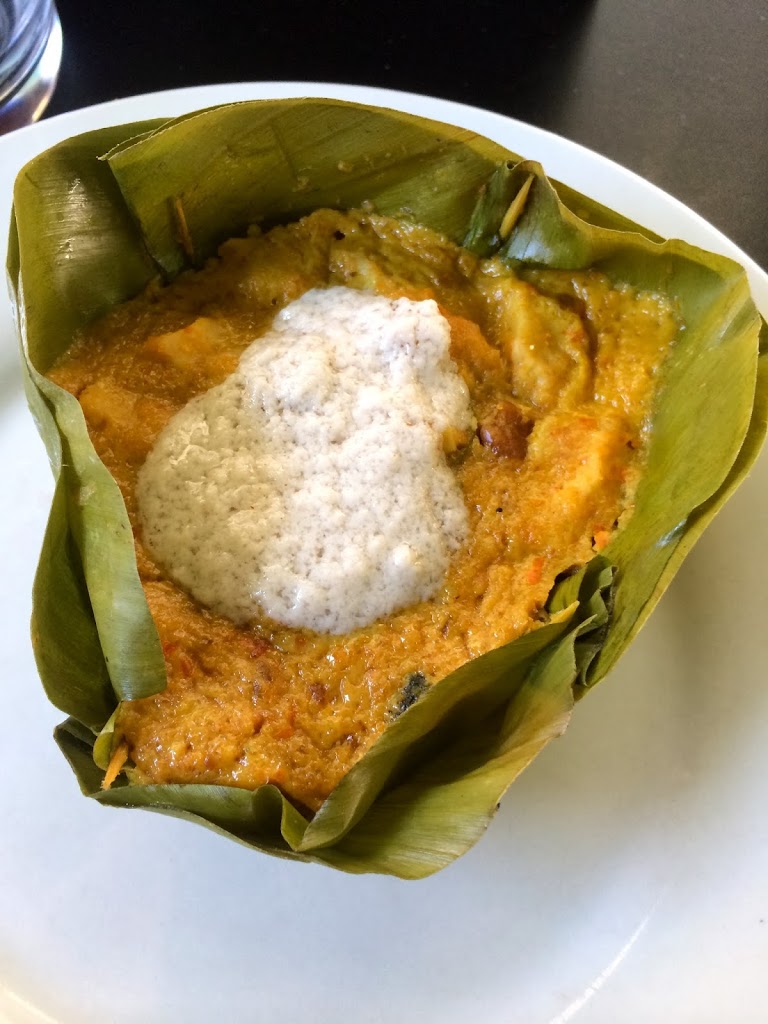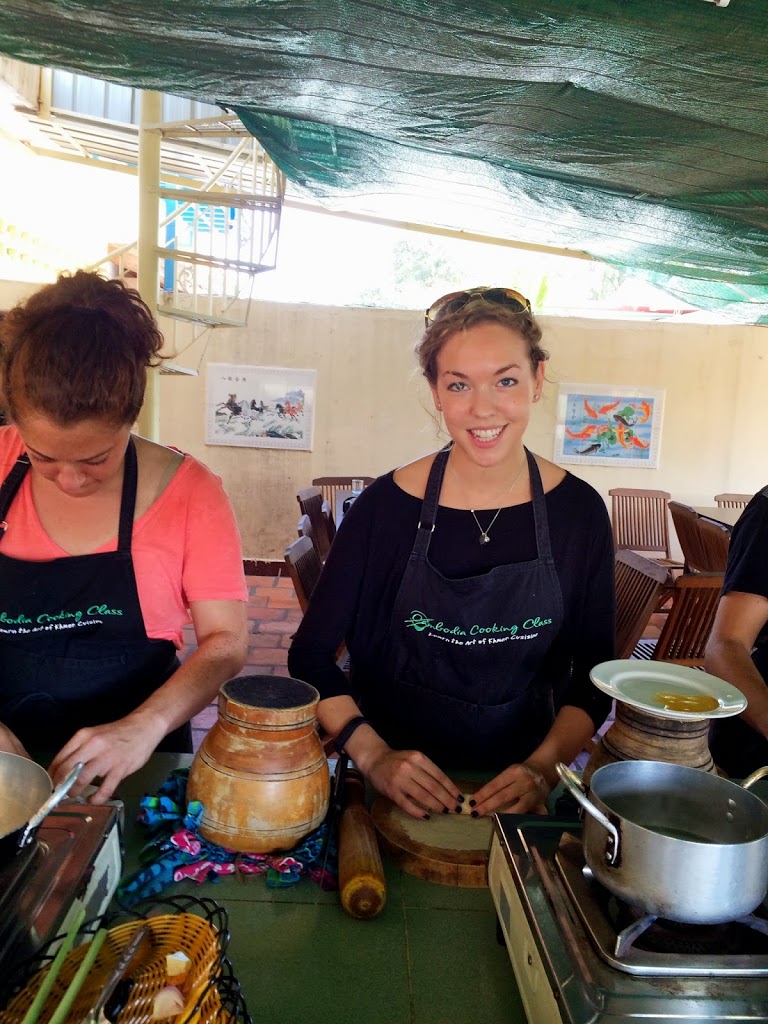You could probably imagine the sequence of events when learning about an exclusive Cambodian cooking class. I was signed up within 30 minutes.
The day was wonderful, and the attention to detail in Khmer cooking kept the group enthralled in chopping, grinding and mixing—even to the point where we ignored our aching biceps and glistening foreheads. Our guide, Song, was an adorable Cambodian woman with a huge smile and direct sense of instruction. I left feeling full, proud of my new taste palette, and anxious to try the recipes soon in my own kitchen.
Song explained the menu of fried spring rolls and chicken amok (pronounced ay-mock) which would collectively take four hours to prepare, cook and eat.
We were whisked to the local Kandal market by Tut Tut (think pedicabs but more…authentic) to learn about and buy the essential Cambodian ingredients. I somehow decided against becoming a vegetarian after viewing more animal parts and flip-flopping live fish than my appetite could handle. But I especially found it fascinating that the Cambodian culture does not use supermarkets or grocery stores at all; just like a bag of produce at Central Market or Whole Foods, sunflower oil, coconut milk and spices are weighed on a scale by the pound for purchase. I was in charge of the bag of eggs (no cartons available), so my balance had to remain spot-on, even during a bumpy Tut Tut ride to our destination.

Song showed us to the rooftop kitchen, complete with long parallel dining tables and work stations lined with cutting boards, knives, and a large mortar and pestle for each person. Immediately, we grabbed aprons and took turns shredding taro and carrot for the fried spring rolls. Song taught us the tedious, necessary process of removing starch from taro to avoid itchy throats and grainy taste. After pouring a tablespoon of salt over the shredded taro, we were instructed to “massage” the taro until a soapy, liquid consistency formed. Then, after the draining the taro and placing into a clean bowl, the process began again. Three times a charm, and the taro was ready to mix and fill the potato flour wrappers. While the spring rolls cooked in the fryer until extra crispy, our homemade sweet and sour sauce came to fruition without even a Cuisinart! Shocking, I know.
The chicken amokrequired three tasks: making the kroeung (curry paste base from scratch), creating the coconut and palm sugar mixture, and constructing a banana leaf bowl with toothpicks. Once all was mixed, we popped them in the steamer for 25 minutes and enjoyed every bite with a side of steamed rice. A well-made recipe book was gifted to each of us!
Below is the recipe for fried spring rolls with sweet and sour sauce we cooked in Cambodia. Chicken amok is coming up later this week. Once I get to cooking the other recipes in my new booklet, I will share them as well!
fried spring rolls
Makes 12 rolls
1 cup shredded taro root
1 cup carrot
12 pieces of potato (or rice) paper
1 tablespoon peanuts
1 egg, beaten
2 cups cooking oil
1/2 teaspoon sugar
Salt and pepper, to taste
1. Put shredded taro in large mixing bowl and add some salt. Use palms to squeeze out all liquid. Then, mix taro with carrot and add peanuts. Season with sugar and pepper and set aside.
2. La a spring roll sheet flat on a cutting board and fill 1/3 shell with vegetable mix. Wrap spring roll shell tightly and seat end with beaten up egg.
3. Heat oil on high temperature. When oil is hot (test with a piece of rice paper), turn temperature to medium and carefully drop in each spring roll, one at a time. Turn spring rolls frequently until golden brown. Remove (while stove is still on) and drain on a paper towel-covered plate.
sweet and sour sauce
4 cloves garlic
1 shallot
1 fresh red pepper
1 fresh hot chili pepper
2 tablespoons fish sauce
2 tablespoons sugar
1 tablespoon salt
2 tablespoons lime juice
1 tablespoon crushed peanuts
1. Crush garlic in a stone mortar (or Cuisinart). Add sugar, salt, shallot, hot chilis and red pepper. Blend until almost a paste.
2. Add 1/2 cup water, fish sauce and lime juice. Stir well. Add peanuts on top when plating!


